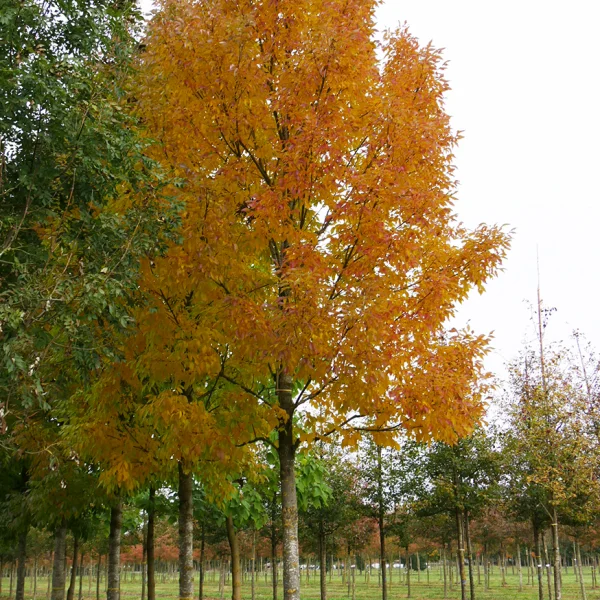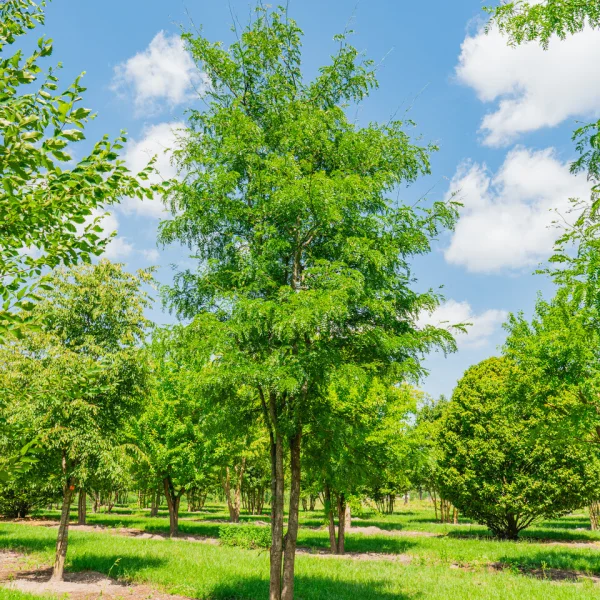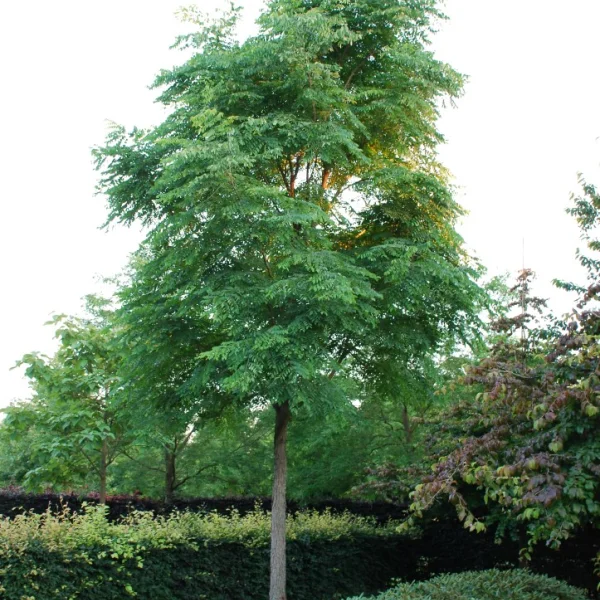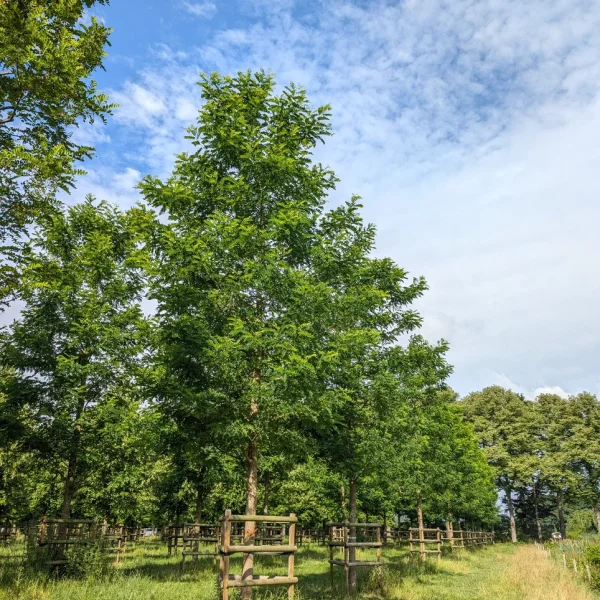Styphnolobium japonicum – Japanese pagoda tree, Honey tree
Fabaceae
Styphnolobium japonicum – Japanese pagoda tree, Honey tree
Arbore robust, cu o coroană inițial rotundă, care mai târziu devine în formă de evantai. Ramificarea începe de obicei jos, pe trunchiul sinuos și gafiat. Ramurile și crengile sunt de un verde izbitor și au multe lenticeli de culoare deschisă. Atunci când sunt rupte, acestea emană un miros neplăcut. Frunzele compuse sunt neuniform penate și au o lungime de aproximativ 25 cm, iar frunzele parțiale au fiecare 2 - 6 cm lungime și sunt ovale sau eliptice. Florile de culoare alb-crem până la galben-crem au o dimensiune de aproximativ 1,5 cm și cresc în panicule terminale care pot atinge aproximativ 30 cm lungime. Abia după 10 - 15 ani apar primele flori. Datorită nectarului său abundent, copacul este o excelentă plantă purtătoare. Păstăile gri sunt constrânse între semințe și apar toamna. Sophora japonica suferă puțin de boli și infestări. Sophora japonica începe să înflorească abundent abia la o vârstă mai înaintată. Odată ce este în plină înflorire, întregul copac este acoperit de o profuzie de flori alb-crem. În verile călduroase, copacul înflorește mai abundent.
Availability
Specifications
Download PDF
Height
15 - 20 m, fast growing
Width
14-18m
Crown
round to fan-shaped, half-open crown, capricious growing
Bark and branches
brown, grey
Leaf
green, feathered leaf
Flowers
cream white, flowers in July
Fruits
grey
Spines/thorns
None
Toxicity
has toxic components
Soil type
clayed soil, loamy soil, sandy soil, calcareous soil
Soil moisture
suitable for dry soil
Paving
tolerates paving
Winter hardiness zone
6a (-23,3 to -20,6 °C)
Wind resistance
moderate
Other resistances
resistant to frost (WH 1 - 6), resistant to de-icing salt
Fauna tree
aluable for bees (honey plant), valuable for butterflies
Application
avenues and broad streets, tree containers, roof gardens, industrial areas
Shape
clearstem tree, multi-stem treem
Synonyms
Sophora japonica
Possibly of interest
Frequently asked questions
Styphnolobium japonicum
Styphnolobium japonicum can eventually reach a height of 15 - 20 m, fast growing, depending on the site and climate conditions.
Styphnolobium japonicum has a fast growing and can eventually reach a height of 15 - 20 m, fast growing, depending on the site and climate conditions.
The right time to plant Styphnolobium japonicum is during the dormancy period. In Western Europe, Styphnolobium japonicum with root balls can generally be planted from mid-November to late April, although this depends strongly on the climatic conditions and the species of tree.
july.
General
 English
English
 English (United Kingdom)
English (United Kingdom)
 Nederlands
Nederlands
 Nederlands (België)
Nederlands (België)
 Deutsch
Deutsch
 français
français
 čeština
čeština
 polski
polski
 español
español
 română
română
 dansk
dansk
 svenska
svenska
 magyar
magyar
 Türkçe
Türkçe
 slovenčina
slovenčina
 русский
русский
 norsk
norsk













